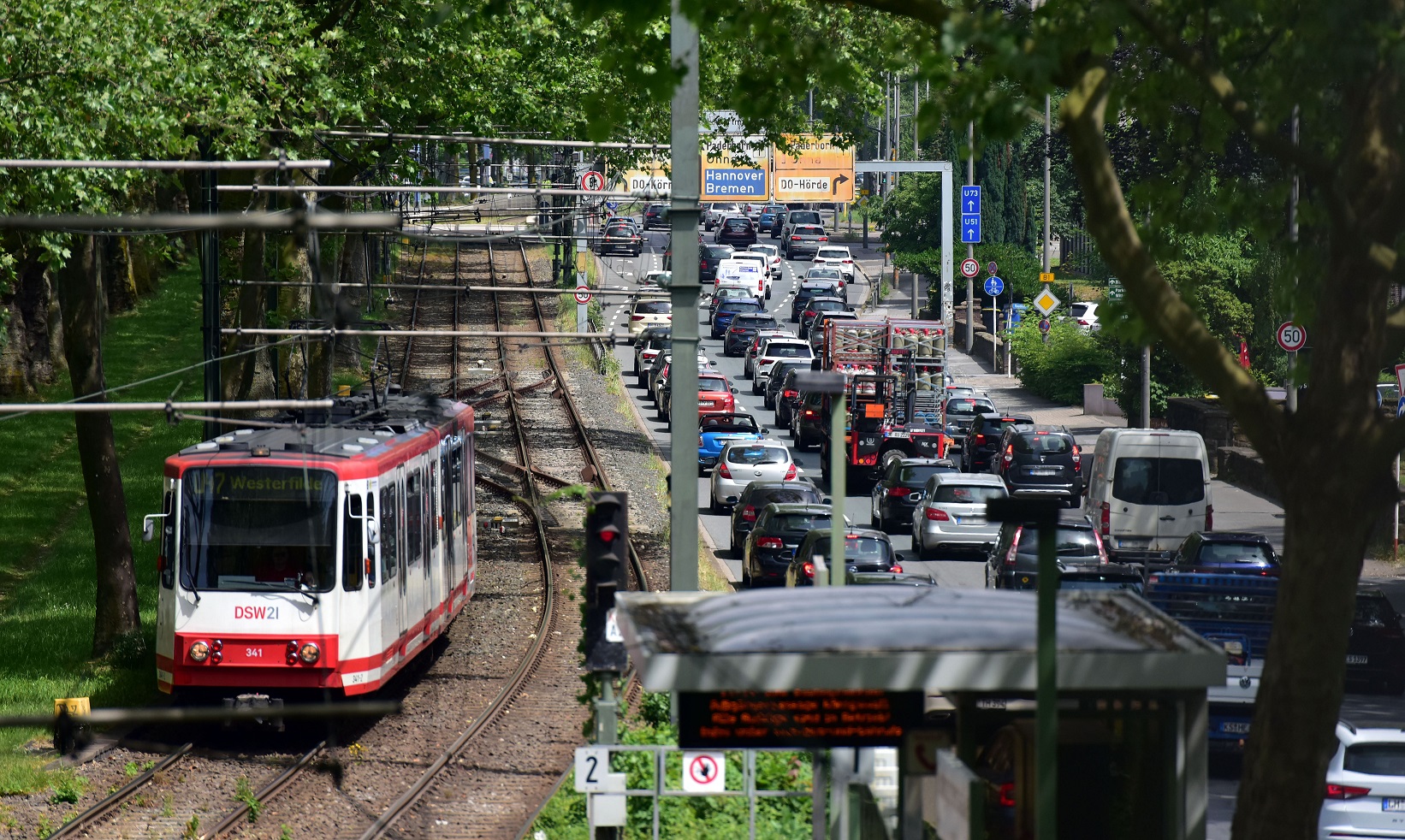DSW21 has sustainably optimised its driving school training for light rail drivers: Whereas the training period at the company's own driving school previously lasted three and a half months, the trainee drivers now take their final exam after just eight weeks. Over the course of the year, DSW21 will now be able to train 72 instead of the previous 60 colleagues for regular rail services. The local transport company is thus responding to the increased demand for qualified drivers.
At the same time, DSW21 has also made some changes to its recruitment: On the one hand, this area has been further strengthened in terms of personnel. Secondly, all those who apply to become a light rail driver must now first complete an online test. Among other things, this test highlights technical understanding.
Training concept continuously improved
DSW21 Operations Manager Ralf Habbes comments: "If you consider that we were training around 24 new light rail drivers a year before coronavirus, we have now reached a completely different level. We have continued to improve our training year after year - we have become more effective and faster." Maximilian Lichterfeld, Head of Driving Schools at DSW21, adds: "We haven't changed the high quality of our training. We are simply making much better use of the time available."
DSW21 HR Director Thomas Kintgen welcomes the optimisations: "When it comes to personnel planning and recruitment, it is of course an immense advantage if we can shorten the training time while maintaining the same level of quality. This makes us fundamentally more flexible and enables us to react better to short-term developments and increasing staff requirements."
Learning in smaller groups
A decisive factor here is that another driving instructor joined the driving school team a few months ago. As a result, the average training group of twelve people is now supervised by three instructors instead of two. "We now have the opportunity to complete many learning units in small groups of four. This is much more intensive. For example, when we take the small groups out on the city railway, the active driving times are automatically higher for everyone," says Maximilian Lichterfeld.
Regular learning progress checks and understandable language
The approach to some of the tests at the new driving school, which was built two years ago, is also new: multiple choice questionnaires have been replaced by written tests with a stronger operational focus. These are tailored more precisely to the actual syllabus. The driving school team is also focussing on even more regular learning progress checks and using simple and easy-to-understand language throughout the lessons. Lichterfeld: "We have carefully tweaked several cogs and reduced the training for light rail drivers by one month."
Before they can start operating their own lines, the trainee drivers have to complete twelve so-called training driver days after their final examination. They are accompanied by an experienced colleague and supported with valuable tips and suggestions. Throughout their training, trainee drivers receive their full driving service salary.
Varying training content in the bus sector
DSW21 has been training 72 new bus drivers every year for some time now. However, this training is not directly comparable to that in the light rail sector due to additional learning content - among other things, there is more extensive instruction in the fare system as well as comprehensive route knowledge about the network in the city of Dortmund. The apprenticeship in the bus sector lasts around five months and ends with a final examination at the Chamber of Industry and Commerce.
Careers at DSW21 - shaping the future of local transport & city life: DSW21
